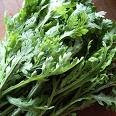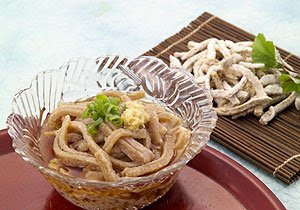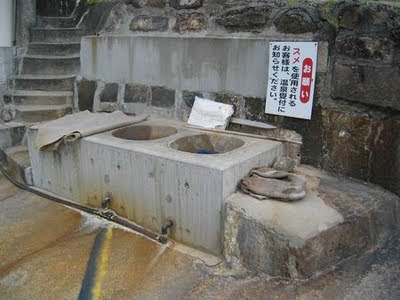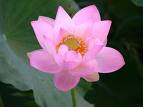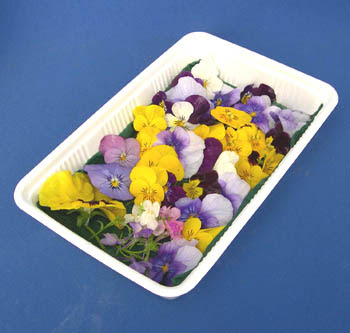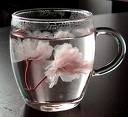. soba 蕎麦 Legends about buckwheat .
::::::::::::::::::::::::::::::::::::::::::::::::::::::::::::::::::::::::::::::::::::::::::::::::::::
Buckwheat noodles (soba)
***** Location: Japan
***** Season: See below
***** Category: Humanity
*****************************
Explanation
Daruma eating buckwheat noodles
Fagopyrum esculentum
Buckwheat flowers (soba no hana)
kigo for early autumn
Shin soba 新蕎麦 (しんそば)
new buckwheat noodles
WASHOKU : Autumn Food
kigo for autumn
sobayu, soba-yu そばゆ【蕎麦湯】
cooking water from buckwheat noodles
kigo for all winter
It is served for drinking after rinsing the bowl of noodles with it.
toshikoshi soba 年越し蕎麦 / 年越しそば
eaten on December 31 to pass into the new year
misoka soba 晦日蕎麦 (みそかそば) soba on the last day of the year
..... tsugomori soba つごもり蕎麦(つごもりそば)
toshitori soba としとりそば【歳取り蕎麦】soba to get one year older
unki soba 運気蕎麦(うんきそば) "soba for your good fortune"
..... un soba うんそば【運蕎麦】
fukusoba ふくそば【福蕎麦】auspicious soba
kigo for mid-winter
Silvester-Buchweizennudeln
In the Kamakura period at the temple Jootenji 承天寺 in Hakata they served soba to the poor who could not affort do make it themselves. They were called "Soba for a good government" yonaoshi soba 世直しそば. All the poor who ate these soba had good luck in the coming year, so they were called "Soba for your good fortune" from that time on.
Soba for the New Year were sometimes mixed with gold powder for extra auspicious meaning. See also below, sobakiri.
Soba are auspicious because they are hosonagai 細長い promising a long life, and they are eaten with the sound "slurp slurp, bite bite"
tsuru truru kame kame つるつる かめかめ
. tsurukame 鶴亀 crane and turtle and long life .
. The Twelfth Lunar Month 十二月 juunigatsu - in Edo - .
Many regions of Japan have their own "Soba bunka 蕎麦文化", buckwheat culture.
:::::::::::::::::::::::::::::::::::::::::::::::::::::::::::::::::::::::::::::::::::::::::::::::::::::
quote
Soba (そば or 蕎麦)
is a type of thin Japanese noodle made from buckwheat flour. It is served either chilled with a dipping sauce, or in hot broth as a noodle soup. Moreover, it is common in Japan to refer to any thin noodle as soba in contrast to udon which are thick noodles made from wheat. It takes three months for buckwheat to be ready for harvest, so people can harvest it four times in a year; it is harvested mainly in spring, summer, and autumn. In Japan, buckwheat is produced mainly in Hokkaido. People call soba that is made with buckwheat that has just been harvested "shin-soba". It has more flavor, sweetness and taste than soba.
In Japan, soba noodles are served in a variety of situations. They are a popular inexpensive fast food at train stations throughout Japan and are served by exclusive and expensive specialty restaurants. Markets sell dried noodles and men-tsuyu, or instant noodle broth, to make home preparation easy.
Some establishments, especially cheaper and more casual ones, may serve both soba and udon (thick wheat noodles) as they are often served in a similar manner. However, soba is more popular in Japan. This tradition originates from the Tokugawa period when the population of Edo (Tokyo), being considerably wealthier than the rural poor, were more susceptible to beri beri due to their high consumption of white rice, which is low in thiamine. It is theorized that they made up for this deficiency by regularly eating thiamine-rich soba. In the Tokugawa era, every neighborhood had one or two soba establishments, many also serving sake, which functioned much like modern cafes where locals would casually drop by for an informal bite to eat.
By location
Shinshu soba 信州蕎麦 – named after the old name of Nagano Prefecture. Also known as Shinano soba. (Shinano=Shinshu)
. . . CLICK here for Photos !
Etanbetsu soba – named after the central region of Hokkaidō (Asahikawacity)
Izumo soba – named after Izumo in Shimane
Izushi soba – named after Izushi in Hyōgo
Common Dishes
Cold Chilled soba is often served on a sieve-like bamboo tray called a zaru, sometimes garnished with bits of dried nori seaweed, with a dipping sauce known as soba tsuyu on the side. The tsuyu is made of a strong mixture of dashi, sweetened soy sauce (also called "kaeshi") and mirin. Using chopsticks, the diner picks up a small amount of soba from the tray and swirls it in the cold tsuyu before eating it. Wasabi, scallions are often mixed into the tsuyu. It's said that the best way to experience the unique texture of hand-made soba noodles is to eat them cold, since letting them soak in hot broth changes their consistency. After the noodles are eaten, many people enjoy drinking the water in which the noodles were cooked (sobayu), mixed with the leftover tsuyu.
Mori soba 盛り蕎麦 – Basic chilled soba noodles served on a flat basket or a plate.
Zaru soba 笊蕎麦 – Mori soba topped with shredded nori seaweed.
Hiyasi soba– Cold soba served with various toppings sprinkled on top, after which the broth is poured on by the diner. It may include:
tororo – puree of yamaimo (a Japanese yam with a slimy texture)
oroshi – grated daikon radish
natto – sticky fermented soybeans
okra – fresh sliced okra
Soba maki – Cold soba wrapped in nori and prepared as makizushi.
Soba salad: Outside of Japan, some people eat this type of salad. Cold soba mixed in sesame dressing with vegetables. It is more of a modern and fusion cold soba dish.
Hot Soba is also often served as a noodle soup in a bowl of hot tsuyu. The hot tsuyu in this instance is thinner than that used as a dipping sauce for chilled soba. Popular garnishes are sliced scallion and shichimi togarashi (mixed chilli powder).
Kake soba 掛け蕎麦 – Hot soba in broth topped with thinly sliced scallion, and perhaps a slice of kamaboko (fish cake).
Kitsune soba (in Kantō) or Tanuki soba (in Kansai) – Topped with abura age (deep-fried tofu).
Tanuki soba (in Kantō) or Haikara soba (in Kansai) – Topped with tenkasu (bits of deep-fried tempura batter).
Tempura soba 天麩羅蕎麦 – Topped with tempura, usually a large shrimp.
Tsukimi soba ("moon-viewing soba") – Topped with raw egg, which poaches in the hot soup.
Tororo soba – Topped with tororo, the puree of yamaimo (a potato-like vegetable with a slimy texture).
Wakame soba – Topped with wakame seaweed
Soba-yu – This is warm water that boiled soba, much like broth. People drink dipping sauce mixed with soba-yu to enjoy the flavor of soba. But there is little or no nutritional value.
Sarashina soba 更科蕎麦(さらしなそば) – thin, light-colored soba, made with refined buckwheat
Inaka soba 田舎蕎麦(いなかそば)– "country soba", thick soba made with whole buckwheat
Soba is traditionally eaten on New Years Eve in most areas of Japan, a tradition that survives to this day: Toshikoshi soba. In the Tokyo area, there is also a tradition of giving out soba to new neighbours after a house move (Hikkoshi soba), although this practice is now rare.
© More in the WIKIPEDIA !

source : yumzk
soba delivery 出前の蕎麦屋さん
:::::::::::::::::::::::::::::::::::::::::::::::::::::::::::::::::::::::::::::::::::::::::::::::::::::
. WASHOKU
harako soba はらこそば【腹子蕎麦】
with a load of ikura fish roe.
From Miyako Town, Iwate
insutanto men インスタント麺, insutanto soba インスタントそば
Instant noodle soups, usually in a plastic cup.
kanmen 乾麺(かんめん)kansoba 乾そば . dried soba
after making them they are dried
kisoba 生蕎麦(きそば)
namamen 生麺(なまめん)namasoba 生そば(なまそば)
fresh soba, after making they are put in a plastic bag and sold.
reitoo soba 冷凍麺・冷凍そば
deep frozen soba, packed to be refrigerated for a long time
yudesoba ゆで麺 (ゆでそば ) boiled soba
they are first made and boiled and then packed for selling.
:::::::::::::::::::::::::::::::::::::::::::::::::::::::::::::::::::::::::::::::::::::::::::::::::::::
harako soba はらこそば【腹子蕎麦】hot buckwheat noodle soup (kakesoba) with a load of ikura fish roe.
ikura soba イクラそば
While eating the noodles and soup, the fish roe slided down to the bottom and is half-boiled by the time the other things are eaten. Now with a soup spoon they are ladled out of the broth.
Houswifes prepare the ikura by cutting a whole salmon open.
Speciality from Iwate prefecture, Miyako town.
hegisoba, hegi soba へぎそば buckwheat noodles like hegi shindles
WASHOKU : Niigata
nihachi soba 二八蕎麦 "2 and 8 soba"
20 percent wheat flour, 80 percent buckwheat flour
The most famous soba mix in Edo.
. . . CLICK here for Photos !
„Zwei zu Acht Buchweizennudeln“ 20% Weizenmehl, 80% Buchweizenmehl
juuwari ... aus 100% Buchweizenmehl
soba doojoo 蕎麦道場 place to learn making soba by hand
"Soba-Trainingshalle"
. . . . .
sobakiri 蕎麦切り(そばきり)cut soba
... kirisoba 切り蕎麦、切りそば
They can be pulled to quite a lenght by hand, and are thus an auspicious food for people to get old and live long.
Also called jumyoo soba 寿命そば. or nobisoba のびそば。
Since on the other hand these soba can break easily, they are also auspicious to
"cut the connection to a person" enkiri soba 縁切りそば or at the New Year to cut the bad luck of old, toshikiri soba 年切りそば.
To be cut off from old debt, they are called
shakusen kiri 借銭切り or kanjoo soba 勘定そば.
In some regions they were called "fortune noodles", undon 運どん.
It was important that you had to eat the full portion of these kirisoba and not leave a bit.
. . . . .
sobayu 蕎麦湯 そばゆ hot water after cooking soba noodles
It contains the vitamins and nutritients and is therefore eaten as well.
First to drink it was a poor man who could not affort to buy a bowl of noodles and asked only for the boiling water ! It is often served in a big laquered container.
. . . CLICK here for Photos !
teuchi soba, te-uchi soba 手打ちそば handmade soba
handgemachte Buchweizennudeln
. Togakushi soba 戸隠蕎麦 .
from Nagano
. . . . .
Soba ryoori そば料理 dishes with soba
. . . CLICK here for Photos !
Aooni soba, ao-oni soba 青おにそば "Blue Demon Soba"
and DARUMA eating buckwheat soba at Moriyama
bukkake ぶっかけ系の冷たい蕎麦 cold soba
with tanuki, kitsune, tororo, oroshi, natto, nameko.
chasoba 茶蕎麦
buckwheat noodles with green tea

. . . CLICK here for Photos !
Izumo Soba, Shimane 出雲そば Wariko Soba 割子そば(わりごそば)
Izushi Sara Soba 出石皿そば
Buckwheat noodles on white plates. Tajima area.
nihon soba 日本蕎麦 日本そば Japanese buckwheat noodles
from Kitakata
„japanische Buchweizennudeln“
Saiko soba 西湖そば Soba from the Western Lake
with a lot of grated radish in the soup
西湖 いやしの里 Iyashi no Sato, Nenba, featuring local history, culture, and nature.
The facilities near Mount Fuji have a small museum with tools to make noodles.
. . . CLICK here for Photos !
. . . Reference
sennin soba 仙人そば buckwheat noodle soup "for mountain hermits"
with many local vegetables
Speciality of Shikoku, Manno-Village
香川県まんのう町
Also from Chichibu 秩父仙人そば, where they are a kind of tsukemen to dip into sauce.
. . . CLICK here for Photos !
shippoku soba しっぽく蕎麦 , しっぽくそば
cooked with vegetables, in Kyoto and Kagawa
. . . CLICK here for Photos !
soba no kurumidare そばの胡桃だれ くるみだれ
soba with walnut sauce
soba with yamabokuchi やまぼくち (山火口)
. . . CLICK here for Photos of the plant !
In some mountain villages in Shinshu, Nagano prefecture, the leaves of yamabokuchi, o-yamabokuchi, a kind of wild chrysanthemum, are used together with buckwheat flour to make strong and long buckwheat noodles, eaten at festivals and celebrations. The noodles are served on special zen tables and all dishes are of black and red laquer for celebrations.
The plants are planted in the slopes of the buckwheat fields in the mountains, to prevent the soil from sliding downhill during a strong rain. The leaves are first hammered and pounded until they are quite small, then they are cooked for two days to get the bitterness out. Next they have to be watered many times in fresh brook water until the rinsewater is not black any more. The remaining fibers of the leaves are then dried and the dried fibers are then mixed with buckwheat flour. In the process of mixing they completely dissolve, leaving the dough with a strong consistency.
The noodles are especially long for celebrations, sue-nagaku means to be happily together for a long time, for example when served at a wedding party.
from 山の内村 village, Nagano
:::::::::::::::::::::::::::::::::::::::::::::::::::::::::::::::::::::::::::::::::::::::::::::::::::
sobabooro, soba booro そばぼうろ soba cookies
simple cookies made from soba flour, water, egg and sugar.
. . . CLICK here for Photos !
They can also be served with icecream.
sobamochi, soba mochi そば餅 buckwheat mochi
Buckwheat seeds are pounded together with the mochigome rice.
. . . CLICK here for Photos !
Buchweizen-Mochi
sobagaki そばがき soba dumplings
soba flour is mixed with water and the dumplings are dropped into a broth with vegetables.
. . . CLICK here for Photos !
wankosoba わんこそば、椀子そば from Morioka, to eat fast
Buchweizennudeln in kleinen Schalen serviert, zum Schnellessen.
*****************************
Worldwide use
Buchweizen, Buchweizennudeln
sobagaki . Buchweizenpüree
*****************************
Things found on the way
*****************************
HAIKU
信州の寒さを思う蕎麦湯かな
Shinshuu no samusa o omou sobayu kana
I think of the cold
there is Shinshu -
cooking water of buckwheat noodles
Masaoka Shiki 子規
He wrote this as a thank you note for a friend who had sent him some buckwheat flour from Shinshu province.
http://www.sinanoya.com/etcetra/others1/index.html
*****************************
Related words
***** mizo soba, mizosoba 溝蕎麦 (みぞそば)
Polygonum thunbergii
"buckwheat in the ditch"
It is useful to remove heavy metal from soil and water and was planted along the fields.
Its small pinkish flowers remind of buckwheat flowers.
. . . CLICK here for Photos !
:::::::::::::::::::::::::::::::::::::::::::::::::::::::::::::::::::::::::::::::::::::::::::::::::::::
Dishes from Nagano
Traditional Folk Toys : making buckwheat noodles
WASHOKU
Menrui, Noodles of all kinds
. soba 蕎麦 Legends about buckwheat .
***** WASHOKU : INGREDIENTS
:::::::::::::::::::::::::::::::::::::::::::::::::::::::::::::::::::::::::::::::::::::::::::::::::::::::::::::::::::::::::::
[ . BACK to DARUMA MUSEUM TOP . ]
[ . BACK to WORLDKIGO . TOP . ]
:::::::::::::::::::::::::::::::::::::::::::::::::::::::::::::::::::::::::::::::::::::::::::::::::::::::::::::::::::::::::::






